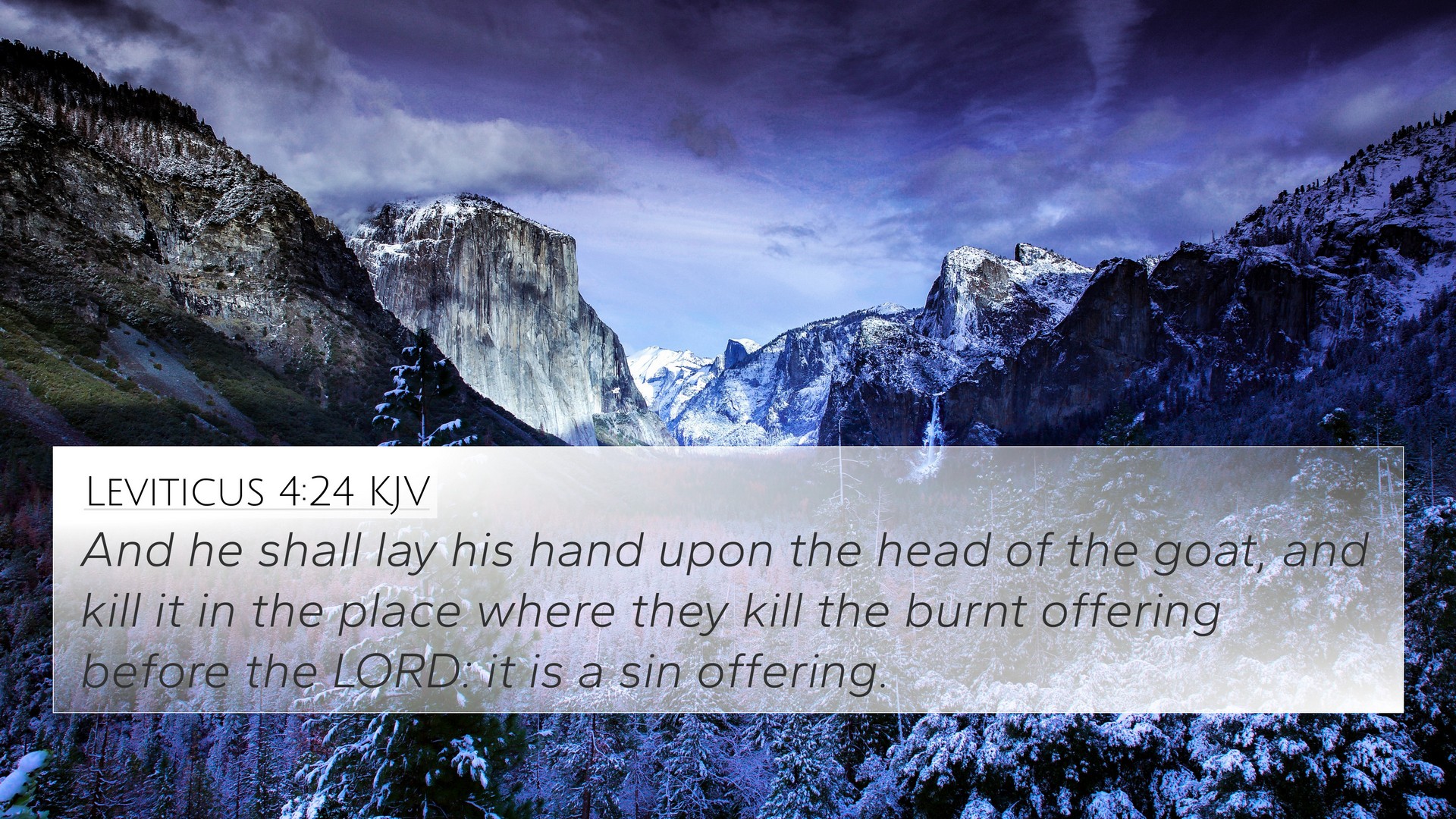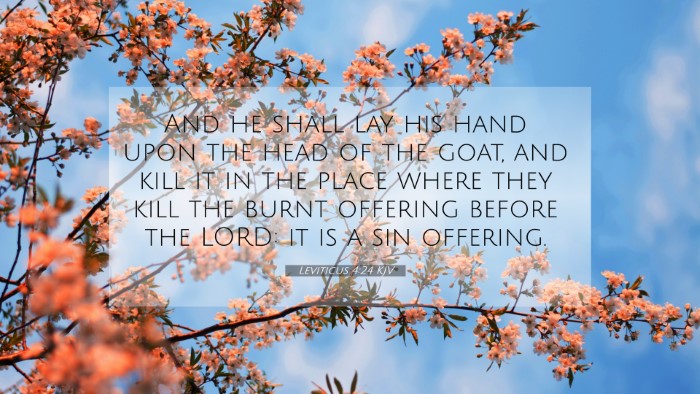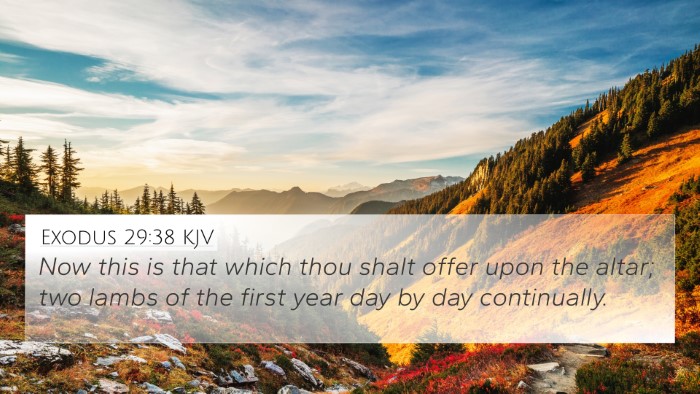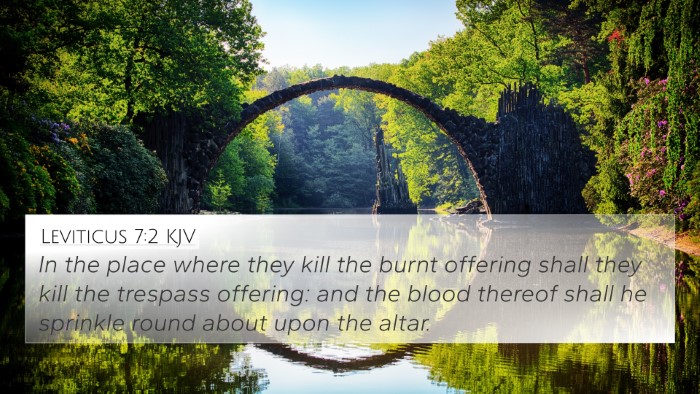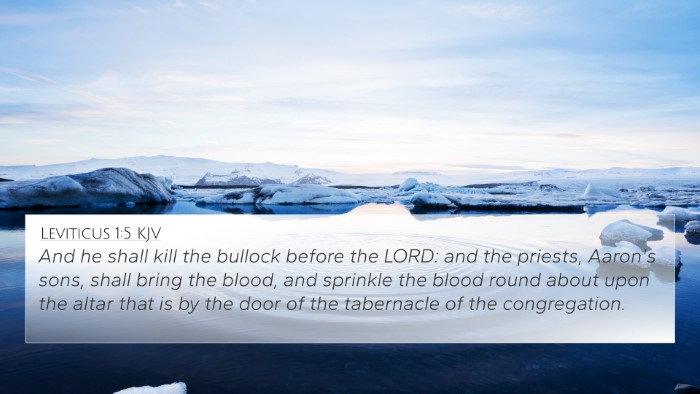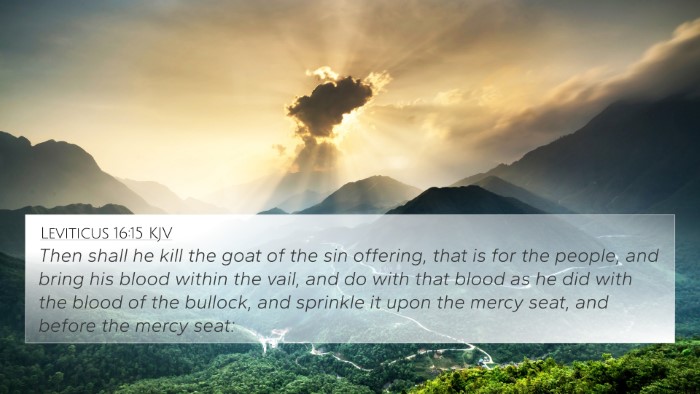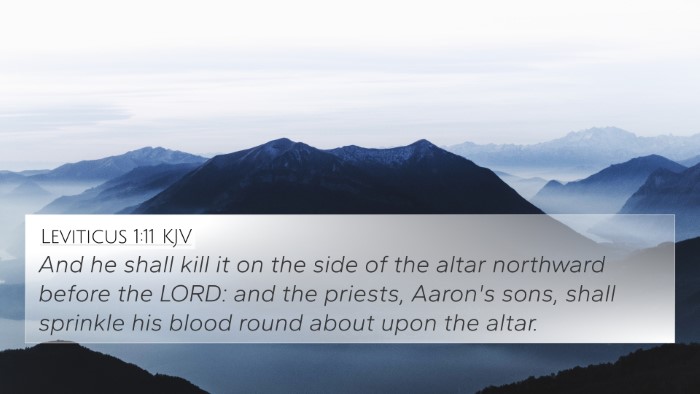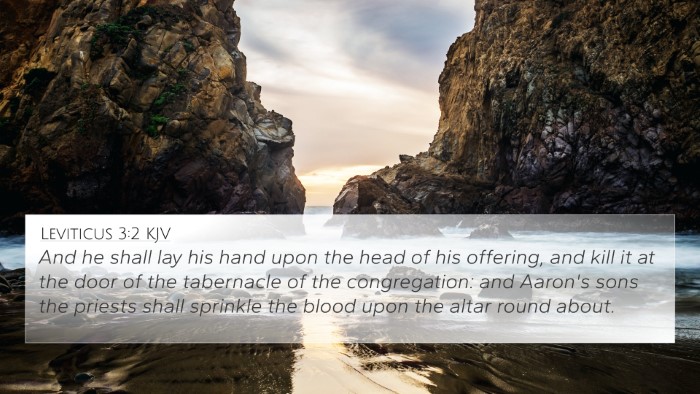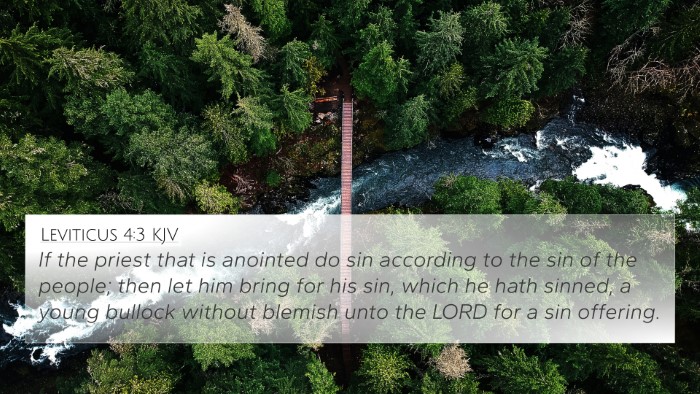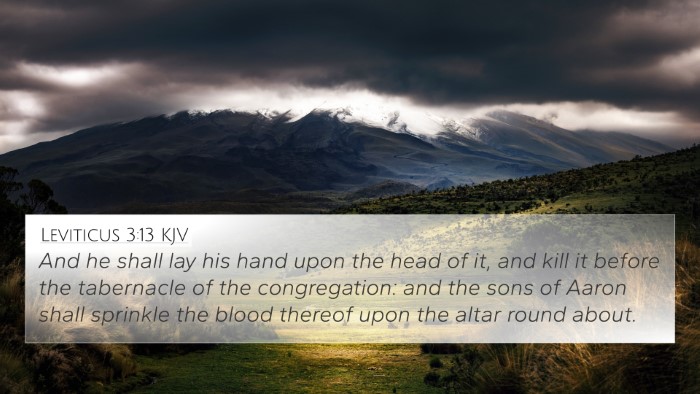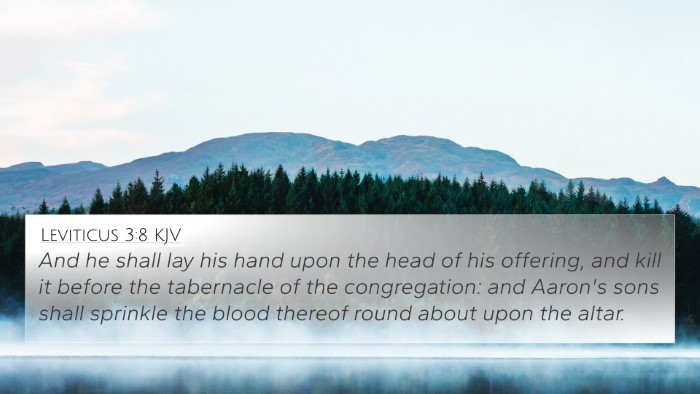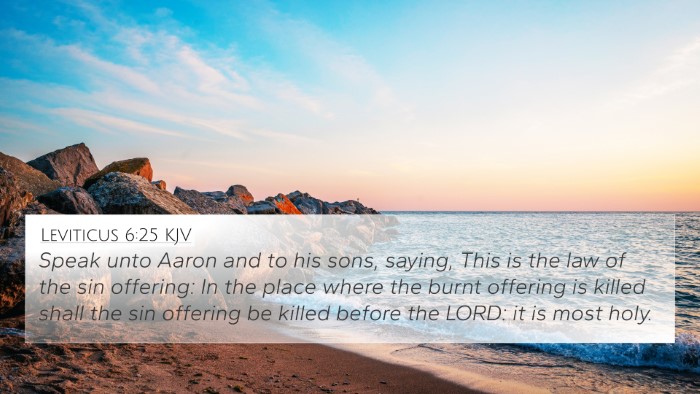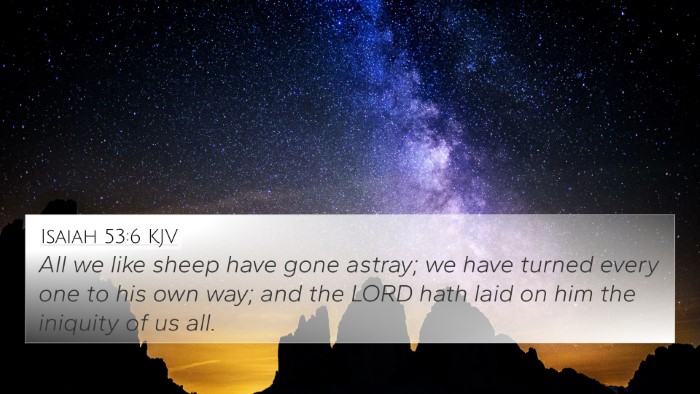Understanding Leviticus 4:24
Leviticus 4:24 states: “And the priest shall take of the blood of the sin offering with his finger, and put it upon the horns of the altar of burnt offering, and shall pour out his blood at the bottom of the altar of burnt offering.” This verse is a part of the Mosaic Law concerning the sacrificial system, specifically addressing the sin offering for unintentional sins.
Sumarized Insights from Commentaries
Matthew Henry’s Commentary
Henry emphasizes the significance of atonement in the Old Testament sacrificial system. He notes that the act of the priest taking blood signifies the seriousness of sin and the need for a substitutionary sacrifice. The blood being applied to the horns of the altar suggests both the holiness required to approach God and the provision made for sin through a mediator. The pouring out of the remaining blood at the base illustrates the cleansing aspect of the sacrifice, emphasizing that redemption and forgiveness require a genuine acknowledgment of wrongdoing.
Albert Barnes’ Commentary
Barnes highlights the ritualistic elements and how they reflect God’s justice and mercy. The process detailed in this verse serves to show that sins cannot be overlooked casually; atonement requires a serious process. The horns of the altar symbolize power and refuge, indicating that the sacrifices are directed toward God’s mercy and grace. Barnes also notes that the act of pouring blood at the base is a reminder that blood represents life, and bloodshed is serious in God's eyes.
Adam Clarke’s Commentary
Clarke stresses the educational aspect of the sacrifice, noting that it served as a vivid object lesson about the consequences of sin. The blood designated for the altar's horns represents atonement, while the poured blood signifies the release of guilt. Clarke also stresses that the entire sacrificial system prefigures Jesus Christ’s ultimate sacrifice, showing how the Old Testament practices relate to New Testament theology. He encourages readers to see the prophetic connections between this verse and the events of Christ's atonement.
Connections Between Bible Verses
This verse connects to several other passages throughout the Bible, illustrating its broader theological implications:
- Hebrews 9:22 - “And almost all things are by the law purged with blood; and without shedding of blood is no remission.” This verse reinforces the necessity of blood for atonement.
- Exodus 29:12 - Details the consecration of the altar, connecting back to the holy use of blood in sacrificial practices.
- 1 John 1:7 - “...the blood of Jesus Christ his Son cleanseth us from all sin.” This New Testament fulfillment illustrates the significance of blood in atonement, linked to Leviticus 4:24.
- Romans 3:25 - This verse remarks on God presenting Christ as a propitiation through faith in His blood—relating to the themes of forgiveness evident in Leviticus.
- Isaiah 53:5 - Prophecy regarding Christ’s death, showcasing the idea of suffering as an atonement for sin, paralleling the sacrificial system.
- Matthew 26:28 - Jesus states, “For this is my blood of the new testament, which is shed for many for the remission of sins,” linking to the idea of sacrificial blood used for forgiveness.
- Leviticus 16:15-16 - Describes the scapegoat ritual, another method of expiating sin, highlighting the shared theme of atonement.
- John 1:29 - “Behold the Lamb of God, which taketh away the sin of the world!” relates to the sacrificial lamb that reflects back to Leviticus offerings.
Cross-Referencing Biblical Texts
Understanding Leviticus 4:24 in the context of its cross-references allows for a richer interpretation of the text. Here are some insights into why these connections are crucial:
- Tools for Bible Cross-Referencing: Utilizing a {Bible concordance, Bible cross-reference guide, and Bible reference resources} enhances study and interpretation.
- Comparative Study: Engaging in a {comparative Bible verse analysis} yields deep insights; identifying links between Old and New Testament themes broadens understanding.
- Hermeneutical Approach: Using {cross-referencing Bible study methods} aids in recognizing the thematic development of atonement throughout scripture.
- Inter-Biblical Dialogue: Observing {thematic Bible verse connections} between different parts of the Bible allows for a comprehensive grasp of salvation history.
Conclusion
Leviticus 4:24 is not just a ritual description; it opens up a profound understanding of sin, sacrifice, and redemption that resonates throughout the entire Bible. By examining the comments from Matthew Henry, Albert Barnes, and Adam Clarke, as well as making connections with several other key verses, one can appreciate the layers of meaning that lead to a more comprehensive understanding of Biblical atonement and God's desire for His people to seek forgiveness through prescribed means. This understanding helps believers appreciate the significance of the sacrifices in the Old Testament and their fulfillment in the New Testament through Jesus Christ.
